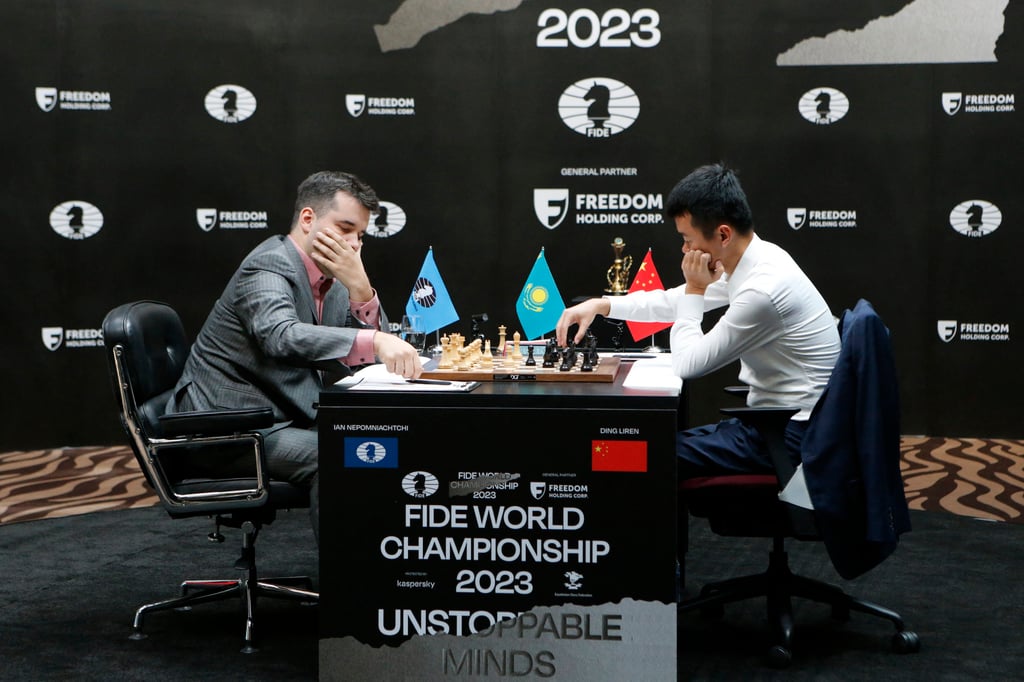How China became No 1 in chess and what it means: the world will ‘look at Chinese people differently’
- China’s rise to the top of global chess rankings is no happy accident but the result of its decades-old Four Steps plan, dedication, and help from neighbours

There are 32 seconds left on the clock for Russia’s Ian Nepomniachtchi, and he is scrambling to secure the victory he was denied in his last attempt at the International Chess Federation (Fide) world championship, in 2021.
His opponent, China’s Ding Liren, has an advantage in time and in pieces on the board, and one move could mean the end for Nepomniachtchi, who has dominated most of this year’s final, on April 30, in Astana, Kazakhstan.
As the fourth and final 10-minute tiebreaker begins, most of those watching think it will result in a draw, which will then lead to a series of one-minute bullet games. But moving his rook to G6 to threaten Nepomniachtchi’s queen, Ding pushes for a risky win.
Black pawn to A2 is Nepomniachtchi’s answer as he sits up straight and takes a breath. He looks to the side, stretches out his arm and scatters the neatly lined up pieces he has taken over the course of the match. A black knight rolls and falls to the floor. He knows he is beaten.

Ding makes a final move with his bishop, and – checkmate – Nepomniachtchi wastes no time extending his hand to give Ding a congratulatory shake.
Ding, dumbfounded at the results, sits with his head in his hand for almost a minute as his counterpart leaves the hall. Finally – after the decades it took to get here – Ding stands and walks out the same way, his first moments as the new men’s chess world champion, and the first one to represent China.
